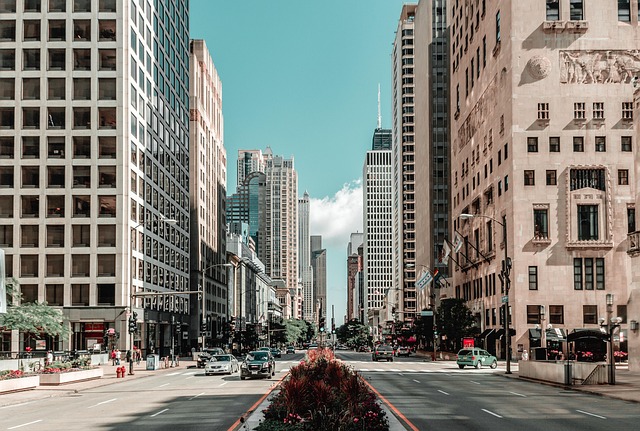Karachi's Saddar Town is renowned for its historic wholesale markets, dating back to the 20th century, that form a vital economic hub. These bustling centers connect local farmers and artisans directly to consumers, fostering entrepreneurship and cultural exchange. Despite modern retail outlets, they thrive as an integral part of Karachi's identity, offering unique goods and an authentic shopping experience for locals and visitors alike. While facing challenges like outdated infrastructure, the future looks promising with potential developments aimed at modernization, ensuring Karachi's wholesale markets remain competitive and sustainable.
Karachi’s Saddar Town is home to vibrant wholesale markets that have been a cornerstone of the city’s bustling economy for decades. This article delves into the historical evolution of these iconic markets, exploring their profound impact on Karachi’s local commerce. From diverse product offerings to an array of vendors, we navigate the unique landscape. Furthermore, we discuss challenges and offer insights into the future prospects of these wholesale markets, highlighting their enduring significance in the heart of Pakistan’s commercial hub.
- A Historical Overview of Saddar Town's Wholesale Markets in Karachi
- The Role and Significance of These Markets in the Local Economy
- Navigating the Diverse Product Offerings and Vendors
- Challenges and Future Prospects for Karachi's Wholesale Market Scene
A Historical Overview of Saddar Town's Wholesale Markets in Karachi

Saddar Town, a vibrant and historic neighborhood in Karachi, has long been synonymous with the bustling wholesale markets that line its streets. These markets, a testament to the city’s rich heritage, have been the lifeblood of local commerce for decades. The area’s market scene dates back to the early 20th century when Karachi was a thriving commercial hub, attracting traders and merchants from across the region. Over time, Saddar Town evolved into a bustling metropolis, with its wholesale markets becoming famous for their diverse range of products, from textiles and spices to fresh produce and handicrafts.
The historical significance of these markets lies in their ability to connect local farmers, artisans, and manufacturers directly to retailers and consumers, fostering a unique entrepreneurial spirit. Karachi’s wholesale markets in Saddar Town have not only survived but thrived despite the rise of modern retail outlets. They remain an integral part of the city’s cultural identity, drawing both locals and visitors who appreciate the authentic shopping experience they offer, making them a must-visit destination for anyone exploring the vibrant tapestry of Karachi.
The Role and Significance of These Markets in the Local Economy

Wholesale markets play a pivotal role in the economic landscape of Karachi, serving as the backbone for the city’s bustling commercial activities. These vibrant hubs are where local businesses and entrepreneurs converge to buy and sell a diverse range of goods, from textiles and electronics to food products and accessories. The significance of these markets cannot be overstated; they facilitate the flow of goods, stimulate economic growth, and create numerous job opportunities within the community.
In Saddar Town, one of Karachi’s most prominent commercial areas, wholesale markets are a sight to behold. They are not just places for trade but also vibrant centers of activity where you can witness the city’s rich cultural tapestry unfolding. The markets contribute significantly to the local economy by ensuring a steady supply of affordable goods to retailers and wholesalers across the region, making them indispensable for the overall health and vitality of Karachi’s retail sector.
Navigating the Diverse Product Offerings and Vendors

Navigating the diverse product offerings in Saddar Town’s wholesale markets is a captivating journey for any visitor. Karachi, renowned for its bustling business districts, showcases an extensive array of goods here. From textiles and electronics to spices and jewelry, vendors proudly display their wares, each claiming to offer the best deals. The market becomes a vibrant tapestry of colors, sounds, and scents, with merchants shouting out promotions and new arrivals.
Exploring these markets involves negotiating prices, haggling is common practice, and it adds to the lively atmosphere. Customers can find unique items or stock up on everyday essentials at wholesale prices. This experience reflects Karachi’s dynamic economy and its role as a commercial hub, where diverse businesses thrive and cater to a wide range of consumer needs.
Challenges and Future Prospects for Karachi's Wholesale Market Scene

Karachi, as Pakistan’s financial hub, boasts a vibrant wholesale market scene that is integral to its economy. However, these markets face significant challenges. Overcrowding, inadequate infrastructure, and lack of modern facilities make navigating them cumbersome, impacting both vendors and buyers. Additionally, the digital transformation has left many traditional wholesale markets behind, creating a gap in terms of efficiency and customer experience when compared to contemporary e-commerce platforms.
Despite these hurdles, the future prospects for Karachi’s wholesale market scene remain promising. There is a growing recognition of the need to modernize and upgrade these markets, with potential developments focusing on improved logistics, digital integration, and enhanced customer services. Such transformations could not only attract more businesses and customers but also contribute to the overall economic growth and sustainability of Karachi.
Karachi’s Saddar Town wholesale markets are not just economic hubs but also a testament to the city’s vibrant history and diverse culture. These bustling markets, with their labyrinthine alleys filled with a symphony of sights, sounds, and aromas, play a pivotal role in the local economy by facilitating trade and providing a wide array of products. However, they face challenges like modernization, competition from online retailers, and infrastructural issues. To ensure their longevity, it’s crucial to address these prospects through strategic planning, technology integration, and preservation of their unique character, making them a thriving part of Karachi’s ever-evolving landscape.
